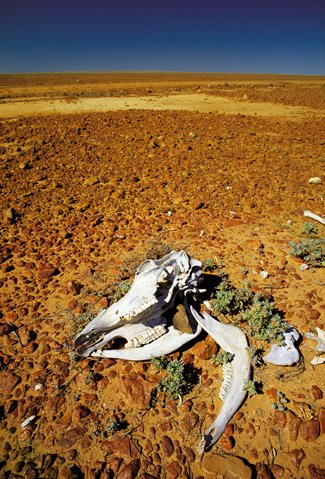New tool predicts drought six months out

A NEW DROUGHT FORECASTING model could help water authorities prepare for droughts up to six months before they happen.
Dr Shishutosh Barua, a water engineer from Victoria University, developed the drought-prediction tool for his PhD thesis, and hopes an early warning will lessen the impact of the next inevitable dry spell on communities.
Droughts are a common occurrence in Australia, leaving the land parched and often wreaking havoc on communities and their water supplies.
Shishutosh says the recently ended 13-year drought showed how vulnerable people were to water shortages in Australia. He believes six months could buy governments some time to implement water management policies early.
“If they can predict there will be a drought, they can set the water restriction levels and save water by not releasing it from storage beforehand,” he says.
Beyond rainfall
Shishutosh also used his model to accurately detect past major historical droughts in Victoria.
While there is plenty of information about past droughts, there is a gap in forecasting data, and predicting when they will happen is fraught with difficulty.
Shishutosh’s drought index measures several water and climatic variables (water storage, stream flow, water in the soil, evaporation and rainfall), as well as past drought data, to assess the dryness of an area.
He believes his drought-forecasting model is far more conclusive in predicting up-coming droughts than traditional models, which usually only analyse rainfall.
Associate Professor Stewart Franks, an environmental engineer at the University of Newcastle agrees this broader approach makes Shishutosh’s research significant.
“It’s not just based on rainfall, but looks at the variables of drought,” he says, adding that while the research may be useful, it is also limited in that it doesn’t look at the physical mechanisms that cause drought such as El Niño or the Southern Annular Mode.
Other drought-prone areas
Drought is one of the most costly natural disasters, causing an average of US$6-8 billion in annual damages globally. Shishutosh says several academics in India and the USA have already contacted him about his research.
“Water is a hot topic at the moment, and because of climate change more people are concerned about reductions in rainfall,” he says. “There will be more frequent drought in the coming years according to the climate change scenario analysis.”
Shishutosh formulated his drought forecasting model using the Yarra River catchment, Melbourne’s major water source, but he insists the index can also be applied to other areas in Australia and around the world.
He says while the numbers need tweaking to suit unique environmental conditions, his equation still stands.
RELATED STORIES

